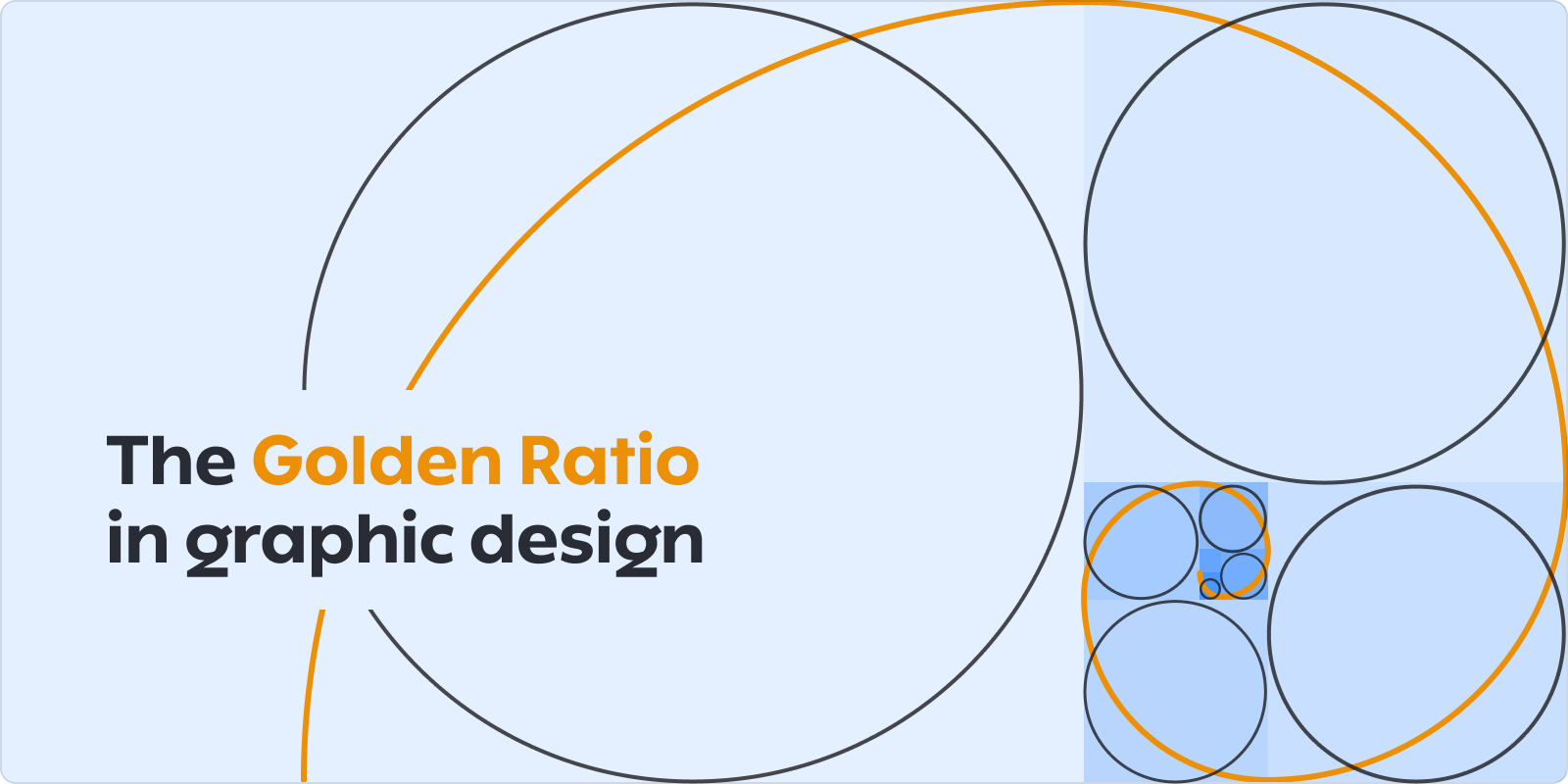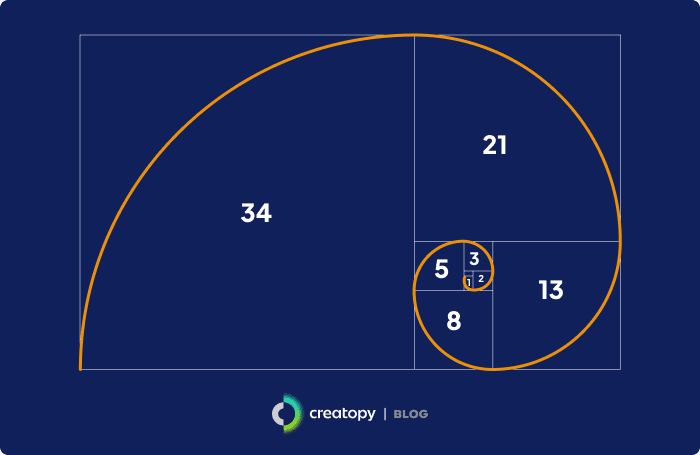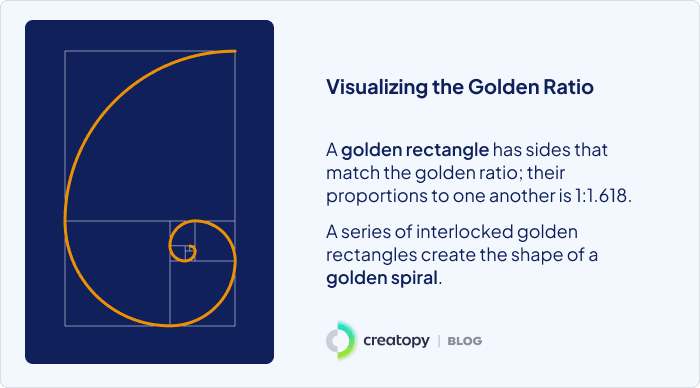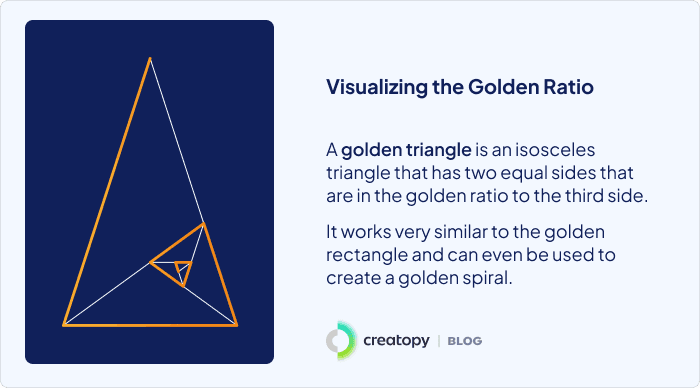Are you an agency? Scale your team's work and impact with The Agency Package.
Are you an agency? Scale your team's work and impact with The Agency Package.

There's no need for us to find a reason or specific explanations when it comes to art. It can simply be Art for Art's Sake, like many writers and artists believe(d).
Beauty exists. It's everywhere, and it's subjective. We don't have to find completion in it. But, as humans, we do search for balance.
And here's where the Golden Ratio comes to help whenever we want to create something harmonious.
The Golden Ratio is an example that math can help fine arts. This doesn't mean that just using this theory will suddenly make everything look beautiful, but it will be of great help for everyone who's looking to achieve equilibrium.
So, let's dive right in, starting with the Golden Ratio definition.
2. What's the origin of the Golden Ration term?
3. What is the difference between the Golden Ratio and the Fibonacci Sequence?
4. How to create the Golden Ration by yourself?
5. How can you use the Golden Ration in graphic design?
6. Where can you find the Golden Ration being used?
7. What tools can you use for the Golden Ratio calculation?
8. Conclusion
The Golden Ratio also referred to as the Golden Mean or Divine Proportion is a mathematical ratio with its roots in the Fibonacci sequence. This ratio, approximately equal to 1.618, is used to create harmonious compositions in various fields, including design projects, paintings, illustrations, photography, music, and other compositions that thrive on balance. The Golden Ratio symbol is the Greek letter ϕ (Phi) or τ.

In the 1200s AD, the mathematician Leonardo Di Pisa, known as Fibonacci, made calculations resulting in a series of numbers called the Fibonacci sequence. The sequence begins as follows: 1, 1, 2, 3, 5, 8, 13, 21… Starting with 0 and 1, each subsequent number in the sequence is the sum of the previous two numbers. As the numbers in the sequence grow larger, the ratio between them approximates 1:1.618.


In 1815, the mathematician Martin Ohm coined the term Golden Ratio in his study “Die Reine Elementar-Mathematik” (The Pure Elementary Mathematics), where he addressed this for the first time as “goldener schnitt” (golden section).
Before this, the Golden Ratio was called the Divine Proportion by Luca Pacioli and Leonardo da Vinci.
Earlier, I mentioned the Phi number, which comes from the Greeks. This number was first mentioned in Greek history in a book by Eukleides of Alexandria, where he called it the “extreme and mean ratio.”
Even though the Greeks are known for their mathematical calculations, the connection between the letter Phi and the Golden Ratio was made only in the 1900s.

The Fibonacci sequence isn’t exactly the same as the Golden Ratio but is very similar, often leading to confusion between the two terms. When creating the Golden Ratio scheme, we use separation to show its purpose. The Golden Ratio calculation involves dividing two quantities so that the ratio of the sum of the quantities to the larger quantity is the same as the ratio of the larger quantity to the smaller one. This results in the Golden Ratio number of 1.618, called Phi. While the Fibonacci sequence starts from 0 and grows to larger numbers, forming golden rectangles separated into squares with Fibonacci numbers inside each one, the Golden Ratio is characterized by its extreme irrationality and beauty. Irrational numbers cannot be represented by fractions and have an infinite increase, making the Golden Ratio challenging to observe in nature, though it can often be spotted as the Golden Ratio Spiral.
Because the Golden Ratio is approximately equal to a 1:1.618 ratio, it can be illustrated using a Golden Ratio Rectangle. From a mathematical point of view, you can take a square and multiply one side by 1.618, and you’ll get a balanced rectangle. You can also create it out of shapes. Here’s how:
The Golden Ratio Rectangle has a shape from which, if you cut off a square with its side length equal to the shortest side of the rectangle, the part of the rectangle that’s left has the same proportions as the original rectangle. You can repeat this action as many times as you wish, and the rectangle ratio will remain the same.

If you keep cutting the Golden Ratio rectangle to get squares out of it, you’ll end up with progressively smaller squares, which will be your base for the Golden Ratio spiral. Draw an arch in each square to form the Golden Spiral. You can even draw circles inside the squares, and they’ll all be in balance with each other, following the 1:1.618 ratio.

A golden triangle is an isosceles triangle with two equal sides that are in Golden Ratio to the third one. You can create the Golden Spiral based on the resulting diagram by continuously cutting the golden triangle into smaller triangles.

The Golden Ratio can be applied in several key areas of graphic design to enhance visual appeal and effectiveness:
7 days free on us
Let's put these insights into action. Build, scale, and automate campaigns with AI-powered workflows.
Amalia Madalina Pop
Mar 19, 2025 - 21 min read
Ana Darstaru
Mar 18, 2025 - 13 min read